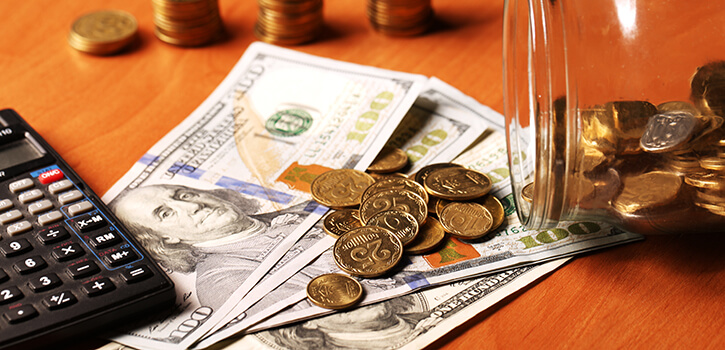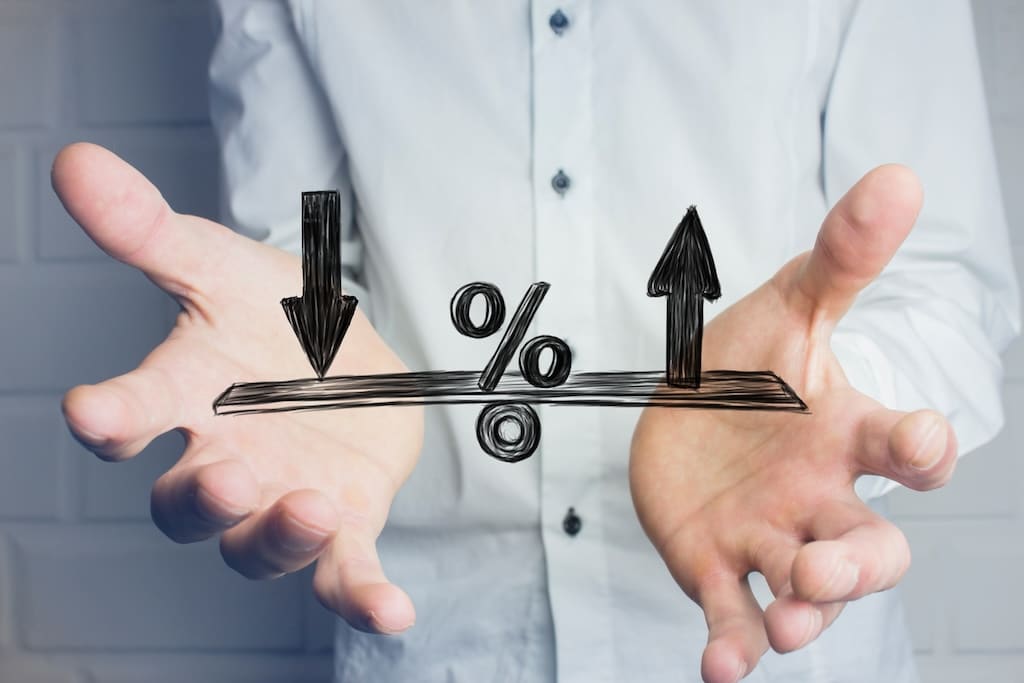It may take a little time, but expect a domino effect to your finances after the Federal Reserve raised its benchmark interest rate Dec. 14 for only the second time in eight years.
Any type of variable-rate debt is likely to become more costly in the foreseeable future. The best way to avoid the impact is to pay off the debt as soon as possible.
The Fed raised the federal funds rate – what banks charge each other for overnight loans – by a quarter point, from a range of 0.25 to 0.5 percent to a range of 0.5 percent to 0.75 percent. The rate has been close to zero since 2008. Higher interest rates could eventually trickle down to consumers as businesses have to pay more to borrow money.
Here are seven areas where your wallet could take a hit:
1. Credit cards
If you don’t pay your credit card bill in full each month, then you’re probably paying for your revolving credit with a variable interest rate. The annual percentage rate on most credit cards ranges from about 10 percent to about 24 percent. (Some local credit unions offer APRs as low as 5 or 6 percent, and there is no upper limit to the interest rate an issuer can charge.)
A note on fixed-rate cards: a fixed-rate credit card has an APR that (in theory) does not fluctuate. Fixed-rate cards are uncommon today but are still offered here and there. It’s important to understand that the rate on a fixed-rate card can change, so long as the issuer provides the cardholder with written notice as required by law. The vast majority of credit cards issued today are variable-rate cards. The variable APR changes as the cost of financing for the issuing bank rises and falls.
Most credit cards tie their variable interest rates to the prime rate, which is about 3 points higher than the federal funds rate. The Fed’s decision to raise the federal funds rate will cause the prime rate to rise, ultimately affecting credit card interest rates by one or two percentage points.
The effects can take awhile to see if you pay interest charges on your credit card and the interest compounds. You’ll start by paying interest on what you owe, and then on the interest that has been accumulating on the principal.
Higher interest rates could cause consumers to use their credit cards less, borrow less and buy fewer things.
2. Home equity line of credit
Another type of revolving credit is a home equity line of credit, or HELOC. Most HELOCs are also tied to the prime rate, and you can expect the rate to rise after the Fed raises the federal funds rate.
3. Mortgages
The Fed’s rate doesn’t have an immediate impact on long-term mortgage rates, with the caveat that banks usually find ways to pass on their higher borrowing costs to consumers. The good news is that home loan rates are still relatively low, and mortgages are still more attainable than they were in the past.
If you already own a home and have a fixed-rate mortgage, your interest rate is set and you won’t pay more.
If you’re thinking of buying a home or you own a home with an adjustable-rate mortgage (ARM), rising interest rates could affect you in a few ways.
ARMs usually readjust after three to five years. They’re tied to an index that will likely go up as interest rates rise. If you have one, this shouldn’t be a surprise to you.
Mortgage rates, too, have been on the rise since September in anticipation of future rate increases by the Fed. As of Dec. 15, 2016, a five-year ARM had an interest rate of 3.19 percent, up from 3.17 percent a week ago and from 3.03 percent a year ago, according to Freddie Mac.
The average rate on a 30-year fixed-rate mortgage was 4.16 percent on Dec. 15, up 0.5 points for the week and up from 3.97 percent a year ago.
Low mortgage rates of 2-3 percent since 2011have offset home prices that rose 45 percent during that time, keeping homes affordable for most people, according to the National Association of Home Builders’ Housing Opportunity Index, or HOI.
The HOI found that 61.4 percent of homes were affordable to median income earners in the third quarter of 2016. A rate of 50 percent or higher is considered affordable; affordable is defined as a household spending 28 percent or less of its monthly income on housing.
Rising interest rates could help lower home prices. Potential buyers could be put off by higher home loan rates, causing home sellers to drop prices in response. A buyer’s market could form.
4. Renting
Renting a home or apartment could cost more as interest rates rise and landlords look to pass their higher costs on to renters. Investors who buy rental properties typically pay higher interest rates than individual homeowners.
Higher interest rates could price first-time homebuyers out of the market, pushing more people into the rental market.
“Sufficient rental demand will enable property managers to lift rents in virtually every major and secondary metro nationwide, except for the most heated housing markets and in markets where apartment construction is robust,” says Steve Hovland, director of research at HomeUnion, an online real estate investment management firm.
5. Auto loans

Just like home loans, auto loan rates have already started rising in anticipation of the Fed’s rate hike. They’ll likely continue to rise because auto loans move in relation to the prime rate as banks and other lenders respond to the federal funds rate.
The Fed has projected that it will continue raising interest rates in 2017, likely leading to higher car loan rates in the next few years.
For now, auto loan rates are low. A new car loan from USAA for a borrower with excellent credit is available for as low as 0.99 percent, including a 0.25 percent discount for automatic payments.
6. Student loans
Students who borrow for school will see federal student loan rates rise, since they’re tied to the 10-year Treasury rate that the Fed has projected will increase.
Federal student loan rates could rise by 1-2 percentage points in the next few years.
For students with existing loans, the Fed rate hike probably won’t affect them because most student loans are at fixed interest rates.
Private student loans, however, have fixed and variable rates. Variable student loan rates may not see a big jump now, but since private lenders generally tie rates in some way to the prime rate, these loans could experience rate hikes if the Fed continues raising rates.
7. Groceries and other daily purchases
Gas, groceries and other living expenses will likely go up in price because money will no longer be as cheap to borrow. Businesses may pass the additional operating costs directly to consumers.
A higher federal funds rate makes money scarcer, potentially reducing demand for consumer products, even groceries.
What will happen in 2017?
The central bank has projected that the Fed will increase rates three times in 2017, to 1.4 percent by the end of the year. Faster increases by the Fed could happen as a way to counter rising prices if the new president and Congress cut tax rates and increase spending.
Consumers can do themselves a favor by taking advantage of low rates now if a loan is on the horizon, and by paying off variable-rate balances. Credit Sesame can help you find the best personal loans that best match your credit profile and your needs.
Improving your credit score in the New Year can also help. The best ways to improve a credit score are to pay your bills on time, pay your credit card bill in full each month, leave accounts open, and avoid applying for new credit except when necessary. An excellent credit score will help you get the best loan rates when you do decide to apply for a credit or loan product.























